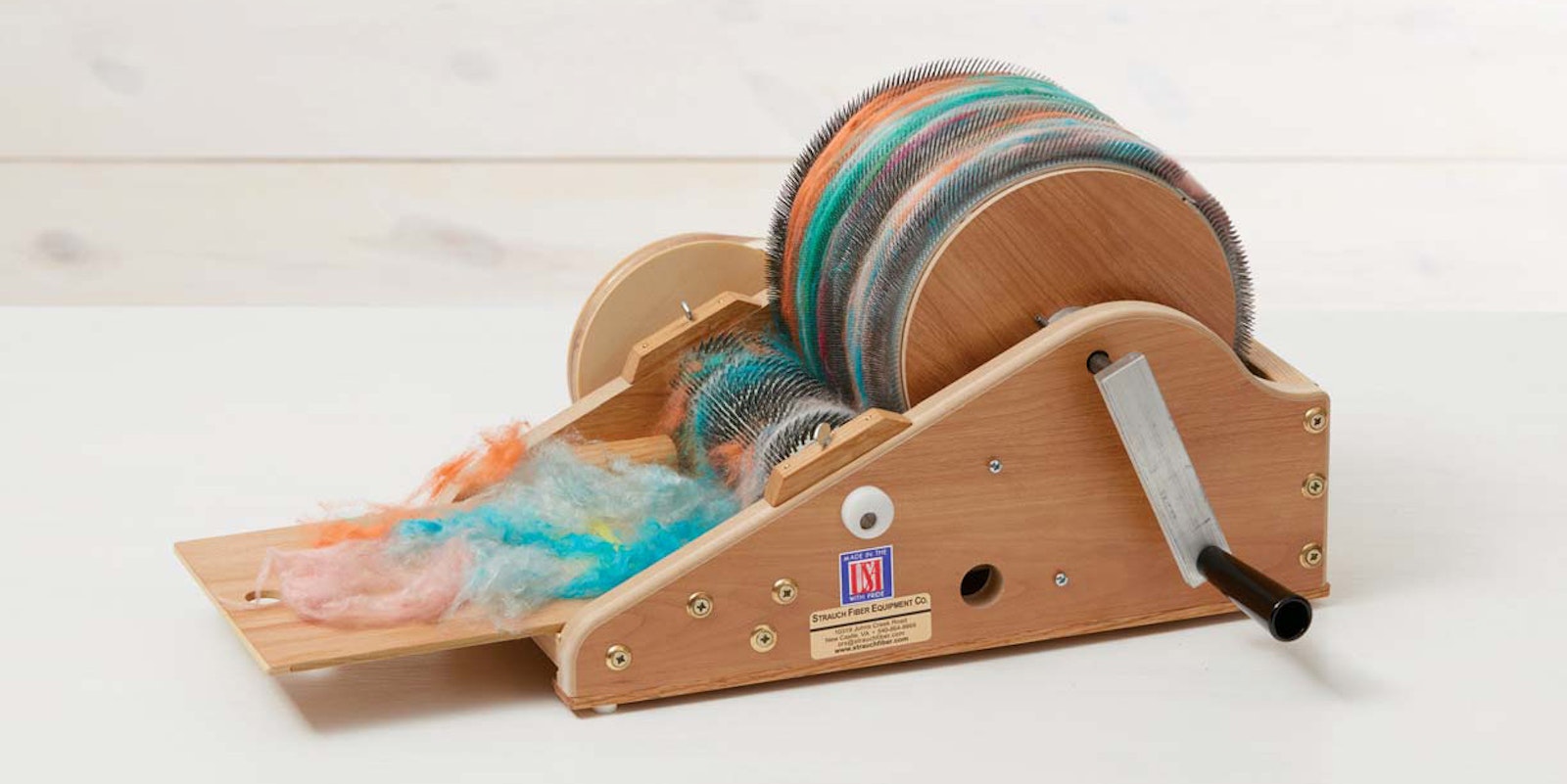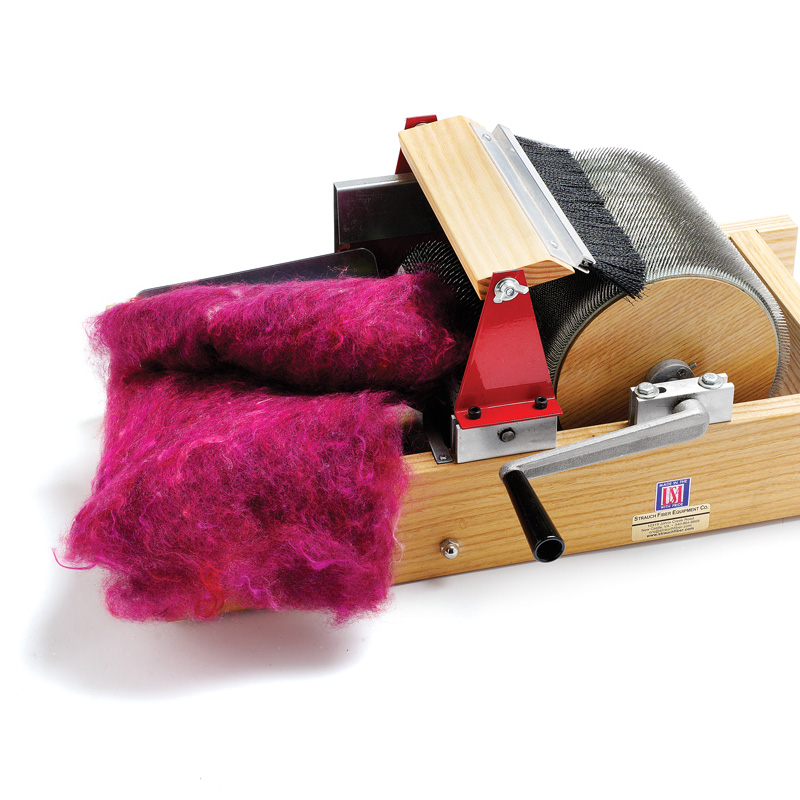A drumcarder is many spinners’ best friend and biggest investment—so you want to baby it for years of successful fiber preparation. Before you set up a drumcarder and gather up a pile of fiber, here are 3 things to know for happy carding, blending, and spinning. If you know how to use a drumcarder well, it will serve you for decades.
1. Understand Teeth Per Inch (TPI)
What teeth per inch (tpi) does your carding cloth have? The tpi determines whether your carder will work best for fine, medium, or coarse fibers. The higher the number, the finer the fiber. A tpi of 72 falls in the average range, but choose finer cloth for silk and exotic fibers or coarser cloth for chunky art batts. Stymied by what carding cloth will work best for you? Check out Esther Rodgers’s blog post “Carding Cloth: What tpi does the best job?”.
2. Take Care When Feeding in Fiber
Don’t feed in too much fiber at once or hold back the fiber in the tray. Instead, present a thin layer of fiber to the licker-in, take your hand away, and gently turn the drum to pull the fiber on. Feeding in too much fiber or turning the drumcarder too fast causes fiber to get jammed between the drum and licker-in. When the fiber on the drum reaches the tips of the teeth, stop carding and remove the batt. Want to learn more about keeping your drumcarder in tip-top shape? Deb Menz shares her advice in “Drumcarder Maintenance: 8 Tips to Keep Your Drumcarder Like New”.
Place a thin layer of fiber in the tray, and keep your hands away from the licker-in. Photo by George Zens
3. Blending Twice Is Nice
You’ll need to try for yourself, but most batts are better the second time around. If you’re looking for a consistent blend, divide the first pass batt into sections and add it slowly to the carder again. For color or texture effects, consider carding the components separately before blending them into your final batt. (Experiment with three or more passes if you like!)
One pass through the drumcarder only begins to blend the fibers. For a smoother batt, blend at least twice. Photo by Joe Coca
Keep these basics in mind for making fluffy blended batts this winter. Need more inspiration? Take Esther’s Card Wool for Color Course, and blend away!
—Elizabeth



